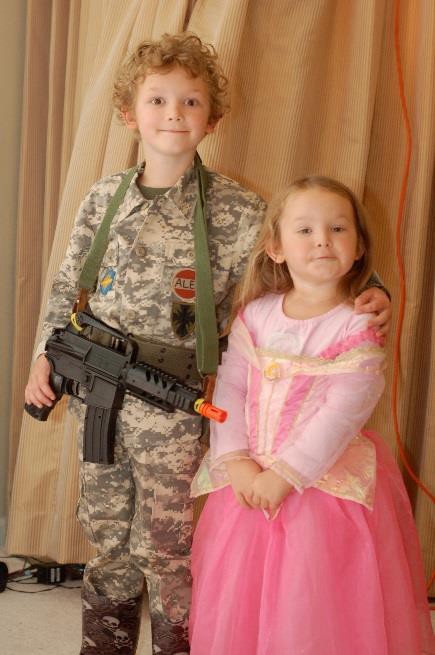105 Gender Identity
The development of gender and gender identity is likewise an interaction among social, biological, and representational influences (Ruble, Martin, & Berenbaum, 2006). Young children learn about gender from parents, peers, and others in society, and develop their own conceptions of the attributes associated with different genders (called gender schemas). They also negotiate biological transitions (such as puberty) that cause their sense of themselves and their sexual identity to mature.

Each of these examples of the growth of social and emotional competence illustrates not only the interaction of social, biological, and representational influences, but also how their development unfolds over an extended period. Early influences are important, but not determinative, because the capabilities required for mature moral conduct, gender identity, and other outcomes continue to develop throughout childhood, adolescence, and even the adult years.[1]
 |
 |
Learning through Reinforcement and Modeling
Learning theorists suggest that gender role socialization is a result of the ways in which parents, teachers, friends, schools, religious institutions, media and others send messages about what is acceptable or desirable behavior as males or females. This socialization begins early-in fact, it may even begin the moment a parent learns that a child is on the way. Knowing the sex of the child can conjure up images of the child’s behavior, appearance, and potential on the part of a parent. And this stereotyping continues to guide perception through life. Consider parents of newborns, shown a 7 pound, 20 inch baby, wrapped in blue (a color designating males) describe the child as tough, strong, and angry when crying. Shown the same infant in pink (a color used in the United States for baby girls), these parents are likely to describe the baby as pretty, delicate, and frustrated when crying. (Maccoby & Jacklin, 1987). Female infants are held more, talked to more frequently and given direct eye contact, while male infants play is often mediated through a toy or activity.
Sons are given tasks that take them outside the house and that have to be performed only on occasion while girls are more likely to be given chores inside the home such as cleaning or cooking that is performed daily. Sons are encouraged to think for themselves when they encounter problems and daughters are more likely to be given assistance even when they are working on an answer. This impatience is reflected in teachers waiting less time when asking a female student for an answer than when asking for a reply from a male student (Sadker and Sadker, 1994). Girls are given the message from teachers that they must try harder and endure in order to succeed while boys’ successes are attributed to their intelligence. Of course, the stereotypes of advisors can also influence which kinds of courses or vocational choices girls and boys are encouraged to make.
Friends discuss what is acceptable for boys and girls and popularity may be based on modeling what is considered ideal behavior or looks for the sexes. Girls tend to tell one another secrets to validate others as best friends while boys compete for position by emphasizing their knowledge, strength or accomplishments. This focus on accomplishments can even give rise to exaggerating accomplishments in boys, but girls are discouraged from showing off and may learn to minimize their accomplishments as a result.
Gender messages abound in our environment. But does this mean that each of us receives and interprets these messages in the same way? Probably not. In addition to being recipients of these cultural expectations, we are individuals who also modify these roles (Kimmel, 2008). What children learn about gender from parents, peers, and those who they observe in society, helps shape their gender schemas.
How much does gender matter? In the United States, gender differences are found in school experiences (even into college and professional school, girls are less vocal in the classrooms and much more at risk for sexual harassment from teachers, coaches, classmates, and professors), in social interactions and in media messages. The stereotypes that boys should be strong, forceful, active, dominant, and rational and that girls should be pretty, subordinate, unintelligent, emotional, and gabby are portrayed in children’s toys, books, commercials, video games, movies, television shows and music. In adulthood, these differences are reflected in income gaps between men and women where women working full-time earn about 74 percent the income of men, in higher rates of women suffering rape and domestic violence, higher rates of eating disorders for females, and in higher rates of violent death for men in young adulthood.[2]
In this video, Dr. Boise briefly defines gender schema and discusses the development of gender identity in early and middle childhood.
- Social and Personality Development in Childhood by NOBA is licensed under CC BY 4.0 ↵
- Lifespan Development - Module 5: Early Childhood by Lumen Learning references Psyc 200 Lifespan Psychology by Laura Overstreet, licensed under CC BY 4.0; Lifespan Development: A Psychological Perspective by Martha Lally and Suzanne Valentine-French is licensed under CC BY-NC-SA 3.0 (modified by Courney Boise) ↵

